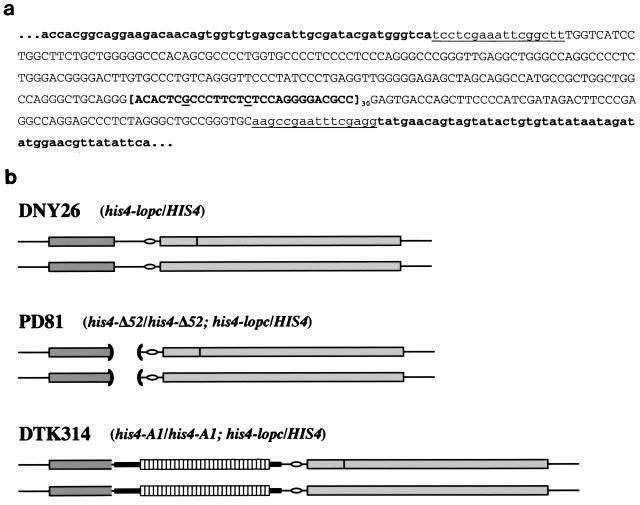FIG. 1.
The HRAS1 minisatellite sequence and diagram of the HIS4 locus. (a) Sequence of the HRAS1 minisatellite and flanking regions. HIS4 locus sequences are lowercase and in boldface. Lowercase, underlined sequences were inserted during the cloning steps (see Materials and Methods). Capitalized sequences are unique HRAS1 sequences. The capitalized, boldface, bracketed sequence is one HRAS1 minisatellite repeat (type 1)—the underlined letters indicate the two sites of variability between repeats at +7 and +15. As indicated, there are 30 repeats in the human A1a allele utilized for this study. (b) Arrangement of the HIS4 locus in various diploid strains. DNY26 is a diploid strain bearing the wild-type HIS4 promoter sequence and the his4-lopc heterozygous insertion (dark vertical bar) disrupting the HIS4 coding sequence on one chromosome. PD81 is isogenic with DNY26, except that the promoter region has been deleted, as indicated by the open parentheses. DTK314 is also isogenic but contains the HRAS1 minisatellite sequence (white boxes) inserted in place of the region deleted in PD81. Dark gray rectangles are BIK1 coding sequences; light gray rectangles are HIS4 coding sequences; ovals are the TATAA box for HIS4.

